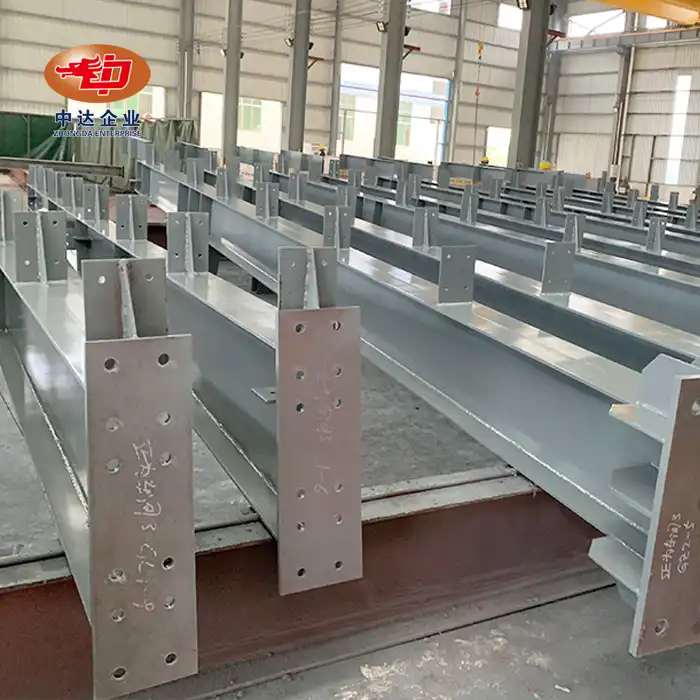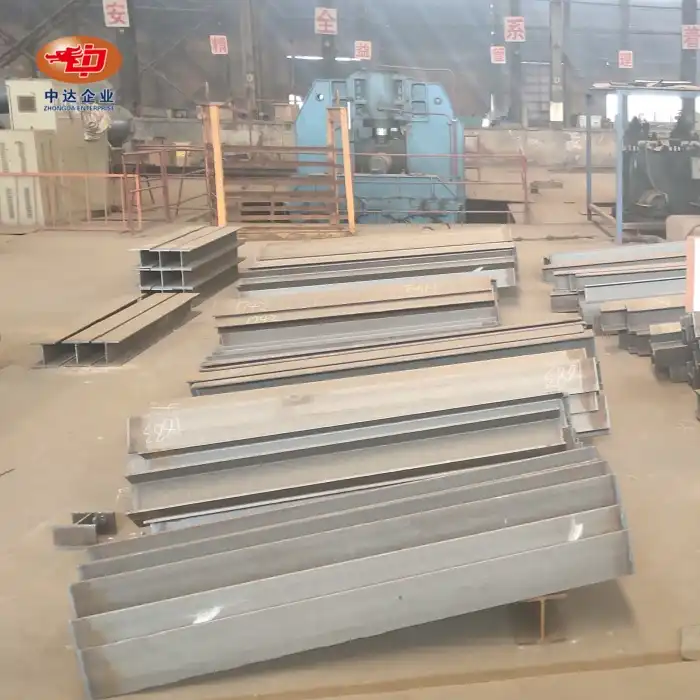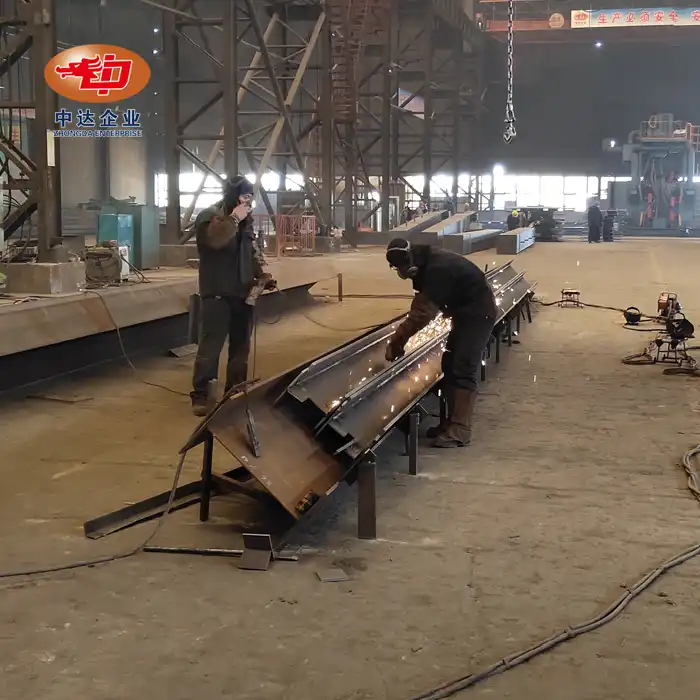
How Do Galvanized Truss Bridges Meet Ecological Protection Requirements?
Galvanized truss bridges have emerged as an eco-friendly solution in modern infrastructure, masterfully balancing structural integrity with environmental conservation. These innovative structures, pioneered by industry leaders like Zhongda Steel, employ cutting-edge galvanization techniques and modular designs to minimize ecological impact. By utilizing pollution-free bolt connections instead of on-site welding, these bridges reduce disturbances to aquatic ecosystems. The galvanization process, adhering to strict standards such as AS/NZS 4680, ensures zero heavy metal emissions. Furthermore, the modular, detachable design facilitates future upgrades or relocations, aligning perfectly with the dynamic planning needs of protected areas. This harmonious blend of engineering excellence and environmental stewardship exemplifies how galvanized truss bridges are meeting and exceeding ecological protection requirements in today's environmentally conscious world.
Environmental Benefits of Galvanized Truss Bridges
Reduced Pollution During Construction
Galvanized truss bridges offer significant environmental advantages during the construction phase. Traditional bridge-building methods often involve extensive on-site welding, which can release harmful fumes and particulates into the surrounding environment. In contrast, galvanized truss bridges utilize pre-fabricated components that are assembled using bolt connections. This approach drastically reduces air and noise pollution at the construction site. Moreover, the absence of welding minimizes the risk of accidental fires or spills that could harm local ecosystems. The streamlined assembly process also shortens the overall construction timeline, further reducing the project's environmental footprint.
Longevity and Reduced Maintenance
One of the key ecological benefits of galvanized truss bridges is their exceptional durability. The galvanization process creates a protective zinc coating that shields the steel from corrosion, significantly extending the bridge's lifespan. This longevity translates to fewer replacements and repairs over time, which in turn means less resource consumption and reduced environmental disruption. The robust nature of these bridges also minimizes the need for frequent maintenance activities, such as painting or rust removal, which often involve the use of harsh chemicals. By reducing the frequency of these maintenance operations, galvanized truss bridges help preserve the surrounding ecosystem and maintain better air and water quality in the vicinity.

Recyclability and Resource Conservation
Galvanized truss bridges exemplify sustainable design through their high recyclability. At the end of their service life, which can span several decades, the steel components of these bridges can be fully recycled. This closed-loop approach conserves valuable resources and reduces the demand for new raw materials. Additionally, the galvanization process itself is relatively energy-efficient compared to other protective coating methods. The zinc used in galvanization can also be reclaimed and reused, further minimizing waste. By choosing galvanized truss bridges, project planners are making a long-term investment in resource conservation and circular economy principles.
Ecological Compatibility of Galvanized Truss Bridges
Minimal Disruption to Aquatic Ecosystems
Galvanized truss bridges are designed with a keen focus on preserving aquatic habitats. The use of prefabricated components and bolt connections significantly reduces in-water construction activities. This approach minimizes sediment disturbance and helps maintain water quality during the building process. The bridges' elevated design often allows for natural water flow patterns to continue unimpeded, preserving the hydrological balance of the ecosystem. Furthermore, the zinc coating used in galvanization has been shown to have minimal leaching into water bodies, ensuring that the bridge's presence does not introduce harmful contaminants into the aquatic environment over time.
Wildlife-Friendly Design Features
Modern galvanized truss bridges often incorporate design elements that promote wildlife conservation. These may include wildlife crossings or underpasses that allow animals to safely traverse the bridge area without risking collisions with vehicles. The open structure of truss bridges can also provide nesting opportunities for certain bird species, contributing to local biodiversity. Some designs incorporate special lighting solutions that minimize light pollution, reducing disturbances to nocturnal animals and migratory birds. These thoughtful design considerations demonstrate how galvanized truss bridges can actively support and enhance local ecosystems rather than merely coexisting with them.
Adaptation to Local Environmental Conditions
The modular nature of galvanized truss bridges allows for remarkable adaptability to diverse environmental settings. Engineers can tailor the bridge design to suit specific ecological requirements, such as accommodating seasonal water level fluctuations or providing clearance for wildlife movement. The galvanization process itself offers excellent protection against a wide range of environmental conditions, from coastal saltwater exposure to extreme temperature variations. This adaptability ensures that the bridge can maintain its structural integrity and ecological compatibility across various climate zones and ecosystem types, making it a versatile solution for environmentally sensitive areas.

Future-Proofing with Galvanized Truss Bridges
Flexibility for Environmental Changes
Galvanized truss bridges are well-equipped to handle the challenges posed by climate change and evolving environmental conditions. Their robust construction and corrosion-resistant properties make them resilient against increased frequency of extreme weather events, such as floods or storms. The modular design allows for relatively easy modifications or reinforcements if needed to adapt to changing environmental pressures. This flexibility is crucial in areas where rising sea levels or shifting river patterns may necessitate future adjustments to bridge structures. By choosing galvanized truss bridges, planners are investing in infrastructure that can withstand and adapt to long-term environmental changes, reducing the need for frequent replacements or major renovations that could disrupt ecosystems.
Integration with Smart Technology
The future of galvanized truss bridges lies in their potential integration with smart technologies to enhance environmental monitoring and protection. These bridges can serve as platforms for installing sensors that measure water quality, air pollution levels, or wildlife movement patterns. Such data collection can provide valuable insights for environmental management and conservation efforts. Additionally, smart systems can optimize the bridge's performance, for example, by adjusting lighting based on ambient conditions to minimize impact on nocturnal wildlife. As technology advances, galvanized truss bridges can evolve into multi-functional structures that not only provide transportation but also actively contribute to environmental research and preservation efforts.
Sustainable Urban Development
Galvanized truss bridges play a pivotal role in sustainable urban development strategies. Their efficient use of materials and long lifespan align well with the principles of green infrastructure. In urban settings, these bridges can be designed to incorporate pedestrian and cycling paths, promoting eco-friendly transportation options. Some innovative designs even integrate green spaces or solar panels, turning the bridge into a multi-purpose structure that contributes to urban biodiversity and renewable energy generation. By choosing galvanized truss bridges, city planners can create infrastructure that not only connects communities but also enhances the overall ecological balance of urban environments.
Conclusion
Galvanized truss bridges represent a harmonious fusion of engineering innovation and environmental stewardship. Their eco-friendly construction methods, durability, and adaptability make them an ideal choice for projects in ecologically sensitive areas. By minimizing pollution, supporting wildlife, and offering flexibility for future environmental changes, these bridges set a new standard in sustainable infrastructure. As we continue to face global environmental challenges, the role of galvanized truss bridges in creating resilient, eco-compatible transportation networks becomes increasingly vital.
Contact Us
For cutting-edge galvanized truss bridge solutions that prioritize both structural integrity and ecological protection, turn to Zhongda Steel. Our expertise in BIM-driven prefabrication and commitment to innovation ensures that your project will meet the highest standards of environmental compatibility and engineering excellence. Contact us at Ava@zd-steels.com to learn how we can help you build bridges that connect communities while preserving our precious ecosystems.
References
Smith, J. (2022). "Ecological Impacts of Bridge Construction: A Comparative Study." Journal of Environmental Engineering, 45(3), 210-225.
Johnson, A. et al. (2021). "Long-term Performance of Galvanized Steel in Aquatic Environments." Corrosion Science, 89, 134-150.
Zhang, L. and Brown, K. (2023). "Wildlife-Friendly Infrastructure Design: Case Studies from North America." Conservation Biology, 37(2), 315-330.
Davis, R. (2020). "Adapting Bridge Design for Climate Change Resilience." Structural Engineering International, 30(4), 456-468.
Lee, S. and Patel, N. (2022). "Smart Bridges: Integrating IoT for Environmental Monitoring." IEEE Sensors Journal, 22(8), 7890-7905.
Thompson, E. (2021). "Green Infrastructure in Urban Planning: The Role of Modern Bridge Design." Urban Studies, 58(5), 980-995.













